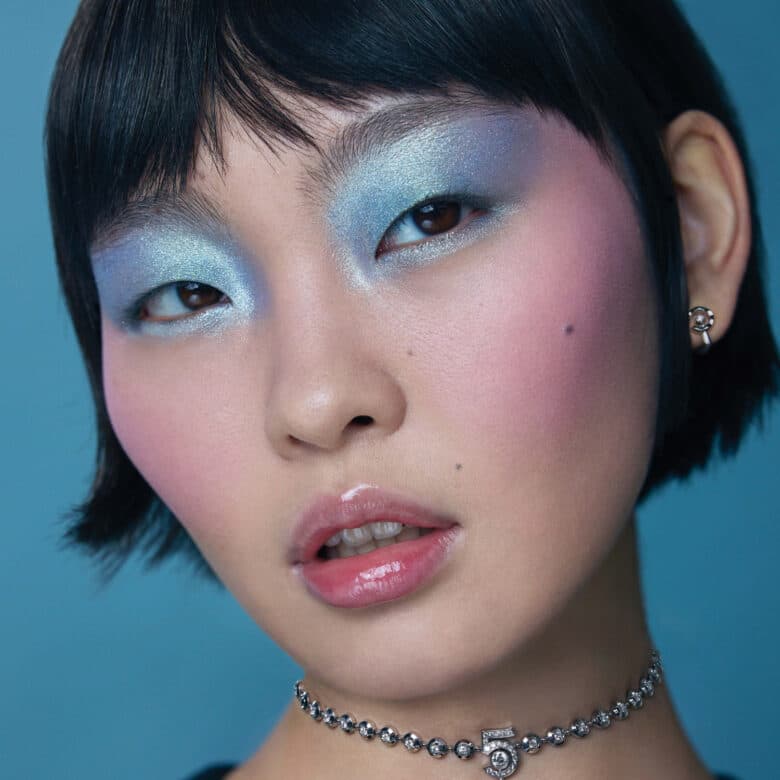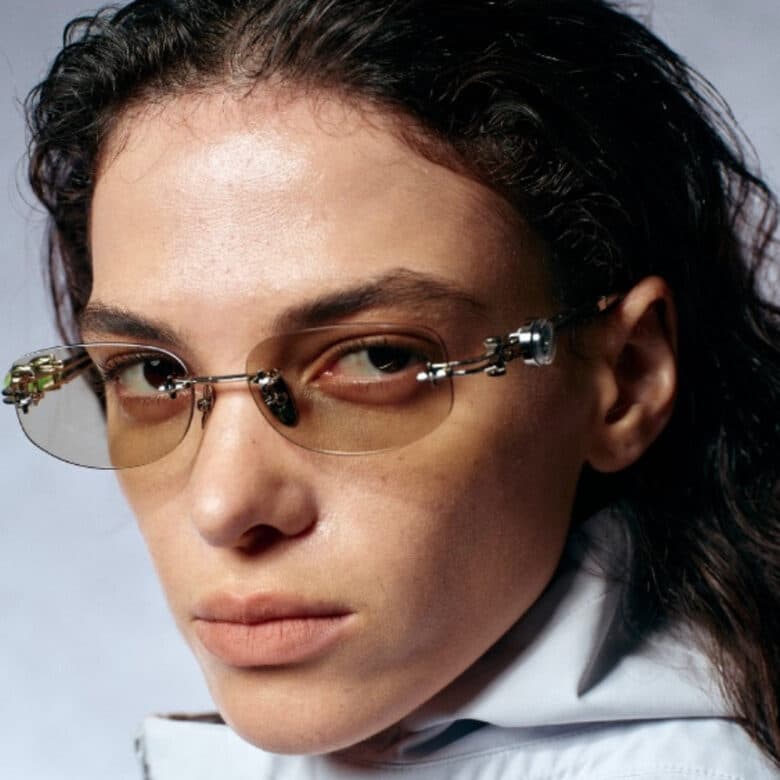Jay Prince: Notes from a musical sabbatical

Reading back my interview with Jay Prince, I’m a bit taken aback. This isn’t a guy who just makes music — he almost philosophizes it into existence. When he discusses meeting his Congolese grandmother for the first time, it sounds less like a musician’s homecoming and more like a professor on sabbatical. “It’s about gaining perspectives,” he explains, with a markedly calm assurance. You can almost picture him unfolding a tea-stained map at each junction, noting cultural connections as meticulously as he layers his jazz-infused beats.
Between founding Lounge In Sounds (“a platform that fosters connections among people through music”) and Bnetic Media (an art and culture platform), Prince has stayed defiantly independent — though he’s nuanced about that too: “I’m not opposed to major label backing, but I don’t believe the timing aligns with how I want to grow.” He’s got a thoughtful approach. One that extends to his university lectures (yep), where he advises students to “collaborate as much as possible.” I’d attend one myself, but I’m afraid I’d look like an over-eager fan who’s just discovered what actual intellectual rigour sounds like in an industry that rarely demands it.
I could go on, but let’s just say that everything that makes Prince so singular has come together for his debut album SHINE. I sat down with Prince just as the record was ready to see the light of day, hoping some of that intellectual prowess might rub off on me… By the way, the track “Solitude” features Estelle… Who was introduced to Prince thanks to Daniel Kaluuya. Obviously.
Amber Rawlings: How are you, Jay? How’s life treating you?
Jay Prince: I am good, thank you. Life is treating me well!
AR: You’ve been bouncing between London and LA for a while now — how has that dual perspective shaped the sound of SHINE?
JP: In some ways, yes. I lived in LA for about four years. It has always been on my bucket list to live in another country. And LA boasts a vibrant community for music. There’s an endless pool of talented musicians and creatives. If anything, it helped me become a more refined artist — learning from and being surrounded by many creatives.

AR: “Solitude” came together after Daniel Kaluuya introduced you to Estelle. What was that collaborative process like, and how did you know her vocals would fit that particular track?
JP: The collaborative process was quite straightforward. Estelle, as we all know, is one of the best artists of our time. I’ve always been a fan of her music and the influence she has on artists like myself is special. I’ve always loved her voice and artistry. I was in LA at the time, had the song ready, and played it for her in the studio. She loved it and just knew what to do from there. And I trusted her to do what she does best. The same is true for Oddisee — I am a big fan of his, and he definitely influenced my musical sound when I was starting out. I had spent some time with him in New York, playing parts of my album… I’m just so grateful to both of these exceptional artists for contributing to this record — for me, it was a moment.
AR: Your recent trip to Kinshasa sounds really special — meeting your grandmother and extended family for the first time. How did reconnecting with your Congolese roots influence the direction of this album?
JP: It’s more about gaining perspectives. I believe that travelling can offer that — providing a new lens through which to view the world. And with my music, so much is rooted in perspective, whether from lessons learnt or experiences lived. That being said, it has given me a different viewpoint and a deeper understanding of the correlation between home and family, as well as the symbiotic relationship between cultural origins and their meanings to a culture. I’m grateful that my parents ensured, from a young age, that we always knew where we came from and fostered a proud sense of identity. There is a wealth of history in Congo and Angola – the places I come from – and that’s definitely influenced the sound of my music, which reinforces the idea of staying true to myself. African music possesses a rich history as a whole — I’m just thankful to have experienced it all.
AR: You’ve described yourself as being in “two worlds” — London and Africa. With SHINE, are you bringing those worlds, or exploring them separately?
JP: I tend to find myself influenced by various sounds, stories, and ideas — then it’s about finding ways to culminate them all into one creative concept. I believe that the beauty of creativity lies in the ability to bring different worlds together and combine them into one. I am always merging these worlds to create something that may inspire the next artist or listener — serving as a conduit for those who embrace creativity and musicianship.

AR: You’ve built quite the roster of collaborators on this album. Was there anyone who pushed you creatively in unexpected ways?
JP: Every individual involved in this album contributed significantly to my creative development. All the musicians, engineers, and artists encouraged me, as the scale of such a project was unprecedented for me. I entrusted the direction to those involved with minimal guidance during collaborations, a decision rooted in my initial trust in all artists. Working with talents like Estelle, Yussef Dayes, and Anaiis was exceptional — these artists possess unparalleled knowledge and a love for music. Collaborating with Christian Scott was also rewarding — we had previously shared the stage in Tokyo. Overall, this project was characterised by a collective effort, and each participant challenged me to grow not only as a musician but also as a person.
AR: You’re known for your jazz-infused beats, but this album blends rap, soul, funk, and more. What drove you to expand things this time around?
JP: Some of my favourite artists include Robert Glasper, Gretchen Parlato, Sara Tavares, Esperanza Spalding, Richard Bona, and Black Coffee, among others. These musicians excel at blending musical languages with dynamic ranges, skillfully expressing the complexities of musical communication across various styles. They are unafraid to experiment and merge different genres while maintaining a refreshing sense of originality and identity, which has captivated and inspired me.
AR: Tell me a little more about “Lounge In Sounds”. What’s the philosophy behind it? How does it connect to your approach to music?
JP: Lounge In Sounds serves as both a creative platform and a music curation entity dedicated to showcasing music in ways that unite individuals. Fundamentally, it remains a platform that fosters connections through music. My approach is grounded in prioritizing individuals and acting as a pillar of service within an industry that often promotes a focus on the artist.
AR: You mentioned in a previous interview that you’re learning to trust other musicians more in your production process. How did that play out while making SHINE?
JP: It was an incredible experience, as it’s one of the few things you can truly understand only by engaging with it — an act of trust reveals itself only through trust. Honestly, it was mostly inspiring, as exploring new ideas stemmed from the trust in fellow collaborators.
AR: Your music has landed on major game soundtracks like FIFA and NBA2K. Does knowing your music might be discovered that way influence how you approach certain tracks?
JP: It’s truly insightful to realise that my music can thrive on these platforms and within various experiences. While it hasn’t altered my approach to certain tracks – since those songs were created without that in mind – it does strengthen my confidence in what I’m already doing. This encourages me to keep pushing boundaries and consistently deliver music that meets a high and authentic standard.
AR: From your early days on Fruity Loops 4 to producing this album, what’s been the most valuable lesson you’ve learned about your own creative process?
JP: You’ve got to embrace the role of a student to experience significant growth, particularly in music and music technology, which have undergone considerable transformation over the past decade. Although this rapid evolution can occasionally feel overwhelming, it is equally inspiring to witness how these developments foster innovative approaches to creativity. I’ve adopted the mindset of always remaining a student.
AR: You’ve lectured at university, helping younger artists learn to write and produce. What’s the one piece of advice you find yourself repeating most often?
JP: I often find myself advising students to collaborate as much as possible and connect with those around them. The students I lecture are all musicians, singers, and rappers with creative backgrounds, so I emphasise the importance of collaboration since they are all on similar paths. I come from a background of studying at a creative university, where I met some people I still work with today. The music industry can be a challenging and lonely road at times and those who help you get there are your team and the company you keep. It’s an endless journey of learning together.

AR: Between photography and directing videos, I think it’s fair to say that you seem to think visually as much as musically. How do these different mediums play into each other?
JP: The similarities between photography and directing are more pronounced than I initially thought. Both require observing images and their environments to create a visual language and narrative — that’s a skill I’m still perfecting. The most compelling aspect connecting them is the power of visual language — a single scene or photograph can convey a thousand words. In my experience, directing involves collaborating with a larger team, while photography is a more solitary pursuit. Both significantly shape my music and provide its visual backdrop.
AR: You once said you don’t like being in the studio every day — how has your approach to work-life balance evolved while creating a debut album?
JP: I may have exaggerated the “don’t like” part. I do love being in the studio, but I’m okay with not having to be there every single day. I try to live a life where I can explore my other interests and spend quality time with friends and family. During the process of this album, there wasn’t much of a work-life balance. I wasn’t upset about it this time around, though. It was such a fun experience working on the album.
AR: Your photobook from Kinshasa captures everyday life there. Was there a particular moment or scene that ended up influencing a specific track on SHINE?
JP: Many of the photos in the photo book, as well as those I have shared online and with Nowness, are images I aimed to capture of everyday life in the Congo and its people. This inspiration alone led to the creation of the track “US” on the album, which explores the idea of always having ourselves through trials and tribulations — encouraging us to keep going, not give up, and honour our heritage.
AR: You’ve remained independent throughout your career. With your debut album dropping, what keeps you committed to that path rather than going the traditional label route?
JP: For me, staying independent has always been a personal decision regarding my development. It’s about my freedom to explore various avenues, whether in business, education, or music curation. I’m not opposed to major label backing, but I don’t believe the timing aligns with how I want to grow — not only as an artist but as an entrepreneur. I believe there’s more room for flexibility and partnerships beyond traditional label routes.
SHINE will be released on the 16th of May.




